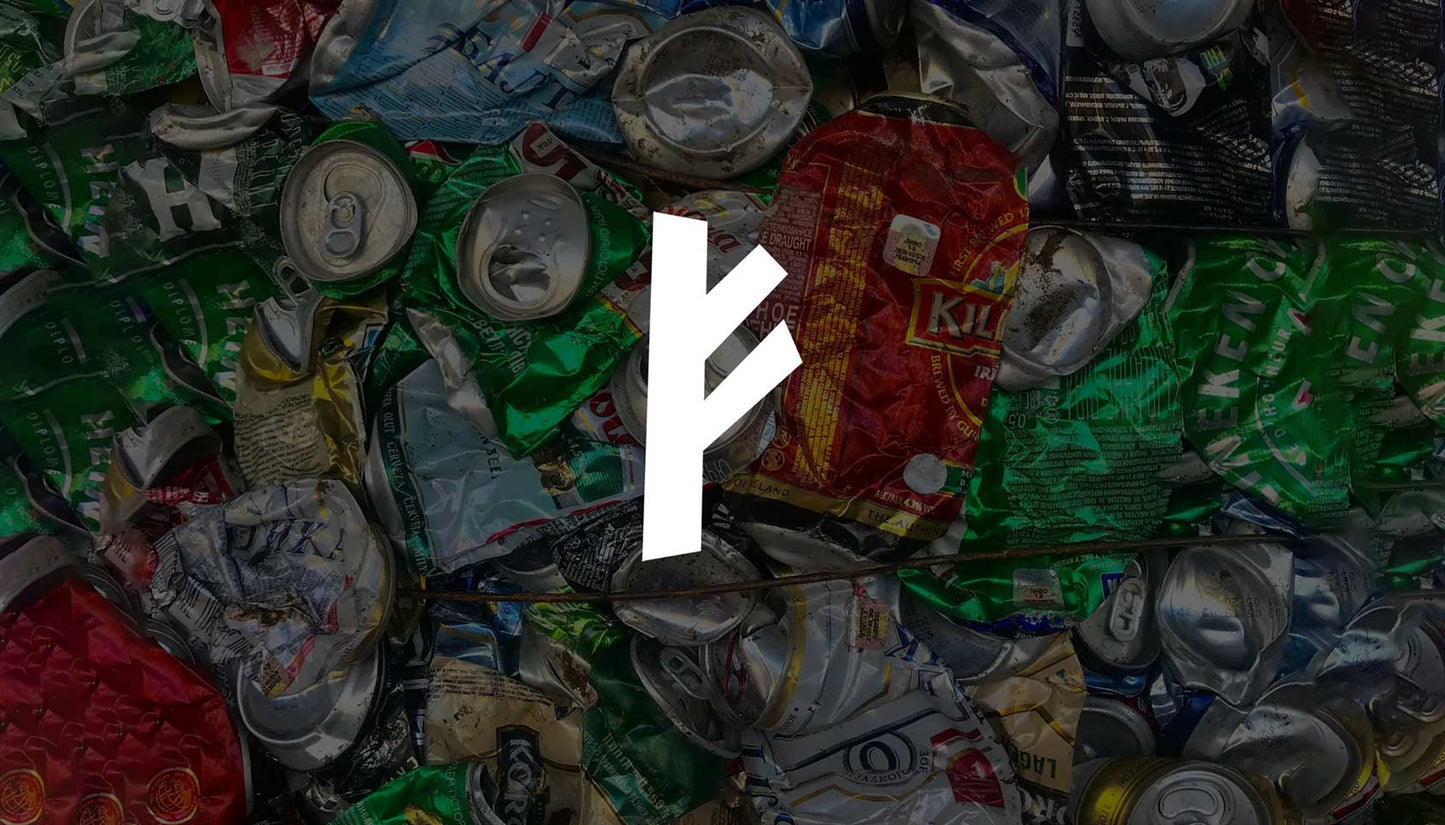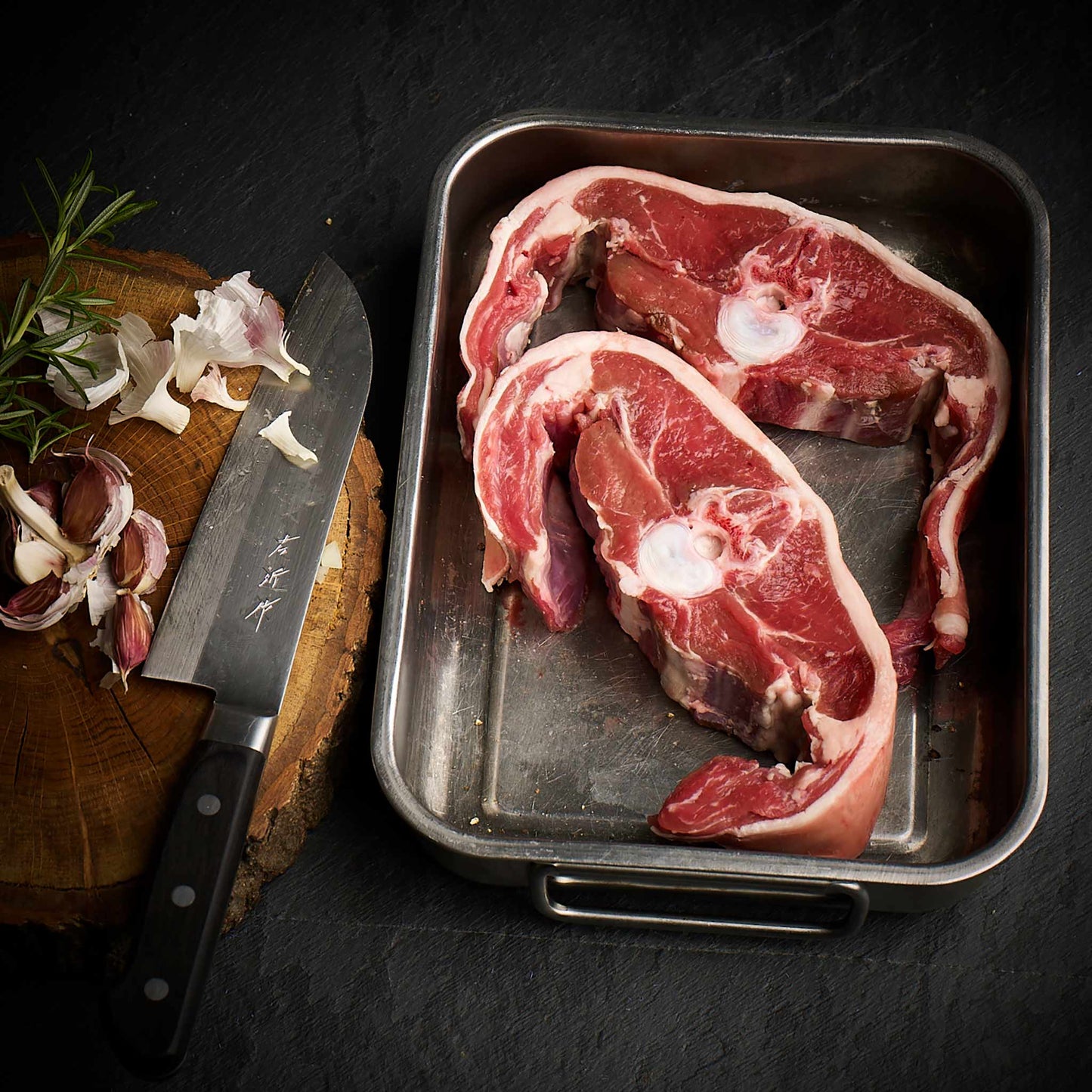We source our chicken from one farm in Leicestershire. The farm is Pasture for Life certified and rears truly free range, outdoor birds.

This year our #Regenuary campaign is focussing on food service and how the foods we eat outside of the home can be prepared with a lower impact, be it fine dining or a sandwich from a petrol station, small changes adopted on mass scale can make a huge difference.
The 5Rs.
In sustainability and zero waste systems there is an often used guide called the 5rs, there are a few variants of this but for our purpose we will define them as:
- Refuse
- Reduce
- Reuse
- Recycle
- Rot (compost or ferment)
To learn more about the origin of the 5 Rs please see the first post in the series.
Recycle
Of all of the 5 Rs this is probably the most complex as recycling is very complex, energy hungry and often limited and difficult, so when running a kitchen at home or commercially we should consider recycling to be the last option rather than a default, if there's any way or refusing, reducing or reusing a material that should be considered before we look at this option.
When considering recycling we're talking packaging that is unavoidable, it is therefore vital that using this last resort that it is actually viable as some packaging cannot be recycled and there's no place for landfill in a zero waste system.
The vast majority of packaging is comprised of one of these 4 main categories but may contain a blend, such as tetra pack which can be made from paper, plastic and metal elements and is therefore very difficult to impossible to recycle
Metals - Steel, aluminium
Glass - different grades and colours
Paper - many kinds, some is not recyclable due to coatings
Plastics - petrochemical and organic
Metals
Metals are probably the easiest material to recycle as long as they're not bonded with plastics or other materials. as we generally only use two metals in packaging, steel and aluminium and these are easily separated due to steel containing iron and being magnetic whereas aluminium is not.
The other great thing about recycling these materials is that they do not lose any structural integrity, the properties are not changed just like water being melted and refrozen.
Aluminium
Industrial production of aluminium began in the 1880s. Because it is a versatile and reusable material, 75% of the aluminium produced during that time is still in circulation right now which is a staggering figure that proves how infinitely recyclable it is.
However, it does require a lot of energy to collect, bale, smelt and press this aluminum into a reusable raw material before it's reforming into new products.
Steel
Steel is just as recyclable as aluminium and just as aluminium offers some serious savings of energy compared to creating new material from mined ore.
The use of scrap steel saves up to 74% of the energy needed to make steel from virgin materials.
Furthermore, recycling one tonne of steel cans saves:
1.5 tonnes of iron ore
0.5 tonnes of coke coal
1.28 tonnes of solid waste
Reduces air emissions by 86%
Reduces water pollution by 76%
Glass
Glass is made from natural and abundant raw materials (sand, soda ash and limestone) that are melted at very high temperature to form a new material and has been made by humans for a very long time. The earlies glass was beads from about 2500 BC but the fist vessels made of glass appeared about a thousand years later in 1500 BC.
Its properties are that it is hard (rather than tough like steel) it is brittle and it is very non reactive. In simple terms glass can be made by heating sand (silicone dioxide) until it melts and becomes a liquid , after which it cools and becomes glass which is interestingly a kind of frozen liquid or what materials scientists refer to as an amorphous solid. It's like a cross between a solid and a liquid with some of the crystalline order of a solid and some of the molecular randomness of a liquid.
One of the problems of recycling glass is that we make it in so many different colours, wine bottles for example can be green, brown or clear with a few even being black or blue, this makes recycling more difficult.
In general in the UK we have 3 main colours of glass that form the majority of packaging products and that is transparent, green and amber, green and amber can be mixes in very small quantities in recycling and in making new material glass but transparent needs to be kept pure, it is essential for recycling that glass is sorted by colour.
In the natural environment glass is very slow to break down as it is very unreactive taking an estimated, (we say 'estimated' because the first glass made has not broken down) but an estimated 4000 years to degrade.
What is far far better than sorting and recycling glass is to reuse it.
A pioneer in this area is the London based Borough wines which has rebranded as Sustainable Wine Solutions in the trade industry.
Sustainable Wine Solutions website
Their Bottle Return scheme brings a new, sustainable lease of life to the traditional wine bottle: each one can be returned, sterilised and reused at least 30 times, reducing the carbon footprint of each bottle by up to 95%.
They also offer a limited range of cask wines in their shops that customers can fill into bottles they bring into the store and reuse, this solution of cask wines is also available in restaurants with more vin-de-table style wines being served on tap, decanted into vessels to be brought to the table.
The best solution for glass is to reuse rather than recycle and toi recycle rather than discard.
The biggest problem is plastic.
Post war boom and the birth of single use materials
The problems really accelerated in the postwar boom of the 1950 with the mass introduction of single use plastics, this has been by far the biggest impact on waste. Right now the word produces a staggering 3.5 million tonnes of plastic and other solid waste PER DAY, this figure is x10 the amount of 100 years ago.
Plastics are a type of synthetic polymer, a polymer being any of a class of natural or synthetic substances composed of very large molecules, called macromolecules, that are multiples of simpler chemical units called monomers. Polymers make up many of the materials in living organisms, including, for example, proteins, cellulose, and nucleic acids.
Interestingly the first synthetic polymers were created as an alternative to ivory as the game of billiards became popular in the mid 19th Century. It was created in 1869 by John Wesley Hyatt in response to a new York manufacturing firm who had offered a $10,000 reward for anyone who could produce a substitute for Ivory he did this by treating the cellulose from cotton fibre with camphor to make the first real 'plastic' material that does not occur in nature.
Newer Plastics
The next big step in plastics production came in 1907 when Leo Baekeland invented the not so snappy titled Polyoxybenzylmethylenglycolanhydride, or 'Bakelight' for short which was the first fully synthetic plastic as it contained no molecules found in nature.
Bakelite quickly found many uses as it was a good electrical insulator, was durable, heat resistant and most importantly, easily mass produced and could be shaped into almost anything but found great use in radio and telephone casings, and such diverse products as kitchenware, jewelry, pipe stems, children's toys.
This wonder material also holds the less honourable distinction of being the first mass produced plastic that is not at all biodegradable, it was the first single use plastic.
Modern petrochemical plastics
Today 99% of all plastics used are of petrochemical origin, that means they are derived from petroleum or natural gas which are fossil fuels. There are 7 main types or categories of plastic taht are most commonly used today.
Acrylic or Polymethyl Methacrylate (PMMA)
Polycarbonate (PC)
Polyethylene (PE)
Polypropylene (PP)
Polyethylene Terephthalate (PETE or PET)
Acrylonitrile-Butadiene-Styrene (ABS)
Out of these 7 there is one stand out that is the most common plastic on earth and that is PE or Polyethylene.
Polyethylene is graded by its molecular density from low density through to high density and even the specialist Ultra High Molecular Weight Polyethylene which is reserved for applications such as body armour but it is the low density polyethylene or PDPE that is of most concern as it is used for plastic bags, shopping bags, food containers and disposable packaging.
The problem with PE
It has been said taht the biggest problem with plastic is that it so useful and so cheap. PE is relatively heat and cold resistant, has good impact resistance, zero water absorption, gas resistant making it food safe and durable. These properties combined with the relatively low cost of this material are responsible for its incredible proliferation.
Under normal conditions in nature, plastic bottles (usually made of polyethylene, also known as PET, or polyethylene terephthalate) will begin to break down only after 500-700 years and even then, the process will be very slow. The sad truth of this fact is that since this material has only existed for the last 50 years absolutely none of it ever made has ever decomposed in nature.
The reason for the slow degradation is a simple one. These materials do not exist in nature, and therefore, there are no naturally occurring organisms that can break them down effectively or at all. The chemical bonds in plastic materials are not accessible or “familiar” to bacteria in nature.

The image above shows the 7 main types of plastic we come across and the complexity of sorting and recycling them, also consider taht some packaging is mixture of these materials.
The sad truth is that most plastic is not recycled. Remember above looking at metals and the staggering figure that 75% of all aluminium ever produced has been recycled and reused, well the figure for plastics is roughly 9%.
What are the options for plastics?
There are a few options we can adopt to significantly reduce our plastic waste, the first taps in to the earlier Rs, to refuse, simply look for other options. Can the plastic bottles that bring liquids into our homes and restaurant be replaced with metals or glass?
However, for reasons we listed above certain material properties of plastics that make them so useful mean that they are hard to replace with glass or metal, glass is brittle, breaks quite easily and metal is tough but heavy, what are the alternatives?
Plant-based plastics?
Plant-based plastic is a type of bioplastic that is created from agricultural scraps, often from corn, sugarcane, wheat or food waste. The term ‘plant-based’ refers to the source of the material itself, not how the resulting plastic will behave after it’s been thrown away.
But, there’s a catch! Only 20% of the ingredients need to be from renewable, organic materials in order for a plastic to be labelled ‘plant-based’. This means the resulting plastic could still be non-biodegradable and be made from up to 80% fossil fuels!
From Natracare:
Plant-based plastic, like all other types of plastic, can be designed to behave in one of three different ways in the environment:
To last forever
Non-biodegradable plastic is extremely durable and will last for years. So long, in fact, that it takes 500 years to degrade. And even then, it doesn’t fully disappear; it just breaks down into smaller and smaller particles that remain in the environment. Many types of non-biodegradable plastic are recyclable, like plastic milk cartons which are made from HDPE, or fruit punnets which are made from PET.
To biodegrade
‘Biodegradable’ plastic can be broken down completely by bacteria or other living organisms.
If a plastic is described as biodegradable, it doesn’t mean that you can throw it away anywhere. If it’s left in the wrong environment, it won’t have a chance to biodegrade and will behave in the same way as non-biodegradable plastic.
It’s a good idea to read the back of the pack to check how you can dispose of biodegradable plastics – as there are many different types and they require different conditions to biodegrade.
If in doubt, leave it out and find an alternative if you can.
To compost
Compostable plastic will decompose in either a home composting environment or in industrial composting conditions. The only plastics that can be composted are those that have met an industrial standard (EN13432) or to a home composting standard like OK Compost.
Something important to note; compostable plastic that is certified to an industrial standard will not break down properly in a home composting environment.
You can’t add compostable or biodegradable plastic to the regular recycling streams. It will disrupt the recycling process, and the whole lot becomes destined for landfill.
Know your options
One of the hardest things with recycling is that options vary hugely depending on postcode.
In the UK recycling comes under the remit of the local council and the provisions are far from standardised. Amongst the 338 local authorities in England, there is considerable variation in 'household waste' recycling rates, ranging from 18 to 64 per cent in 2020/21.
When at home we really need to know what services our council provide and make the best decisions we can to ensure we're reducing and reusing as much as possible and effectively recycling when needed.
For the restaurateur the same options are applicable but there's an added option of using a dedicated material collection company that is not a local council offering.
Companies such as First Mile will collect your recycling and other companies such as Swancote Energy even offer to collect food waste for free to use in an anaerobic digester to produce biogas which in turn provides electricity and heat.
As we're getting towards the end of our 5Rs we really should consider them in order of importance, if you can refuse then refuse, if you can reduce then reduce, if you can reuse then reuse, recycle as a last resort but do it properly.



